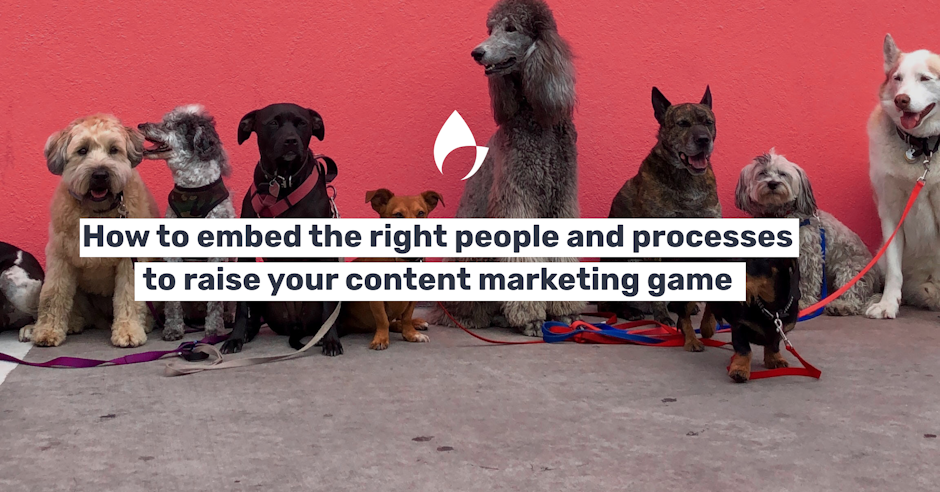Why people and processes are key to cracking content marketing
A strategic approach to content marketing demands that companies embed the right staff and processes

But which marketing staff should brands have in-house, and when should they rely on agencies?
The advantage of in-house teams who deeply understand customers’ changing priorities has certainly been underlined during the pandemic. But it has also highlighted the benefits of creativity, agility and surge capacity that come from agency support.
One solution is to work with agencies who, rather than selling time by the hour, embed consultants within their clients. This delivers both expertise and lasting change. In addition, when Mediablaze’s specialists work on site with clients, they quickly identify any gaps in the internal team’s knowledge, and help to fill these.
However a company chooses to work, it is essential that they document and share their processes in a living, growing Content Marketing Playbook and training programme.
There are several key steps brands should take to ensure they are effectively resourced for successful content marketing:
I. Plan content to drive action
It is common for organisations to struggle with skill gaps at the start of their content marketing journey.
The first content hire should be someone who is able to plan content and manage creatives. This person will own the Editorial Calendar, ensuring it aligns with marketing campaigns and seasonal trends. They will write briefs that bring together the calendar, content strategy and customer needs while enabling space for creativity.
Depending on the size of the team and relative seniority, the job title for a content planner can vary. For example, a blog-focussed content strategy would benefit from a Managing Editor, who will bring commissioning and copy-editing skills.
II. Mobilise the wider business
It is common for dedicated content marketing teams to focus on their micro-objectives rather than macro-level goals. This challenge can be overcome by creating an Editorial Board that represents the wider business. This is a high-level meeting which ensures the content strategy is implemented with company-wide support.
The Editorial Board should enable businesses to step back and review overall performance according to agreed KPIs and goals. It should also facilitate the sharing and updating of the Editorial Calendar to ensure that activity in one part of the business – such as a CSR project or sales promotion – is supported and amplified by the entire organisation.
Central to the Editorial Board is a Managing Editor who writes briefs, commissions and liaises with creators, and oversees the strategy implementation.
III. Think global, act local
Scaling a content marketing operation can be hugely challenging, yet global giants like Nike and Innocent show it is possible, managing to keep tight control of their brands while allowing local markets to target communities in a way that resonates.
Key to sophisticated content marketing is establishing common workflows across teams and territories. These workflows should be centred around customer experience, using insight from local data, and underpinned by shared technology platforms for content production and digital asset management. They must also, of course, be rooted in the Content Marketing Playbook.
To achieve customer-centric content marketing, local markets need to be given flexibility to create locally relevant content within the framework of a global strategy. Well-conceived global assets, translated and localised, can account for the majority of locally published content. A global Editorial Board may also be required to provide governance and guidance.
IV. Be more newsroom — agile, responsive, brave
The most sophisticated content marketing operations are inspired by media newsrooms and science labs. Adopting a newsroom mentality allows the content team to be agile and responsive to news and trends, and to quickly identify and grasp opportunities. This approach demands trusted leadership — ideally in the form of an empowered Head of Content with 24/7 support from creatives and data analysts. A systematic governance process and, ideally, legal support is also recommended.
To ensure a content machine continues to be efficient and effective, businesses need both creative innovators and a scientific method, enabling continued experimentation to ‘fail fast, succeed faster’.
How to improve your content marketing in 2021
Many brands are looking for a more sophisticated approach to their content marketing which is why Mediablaze has created an in-depth whitepaper to help you go from ‘good to great’. Produced by our specialist team of content strategists, this piece provides an operational and measurement framework for content marketing and clearly outlines how to up your content marketing game.

